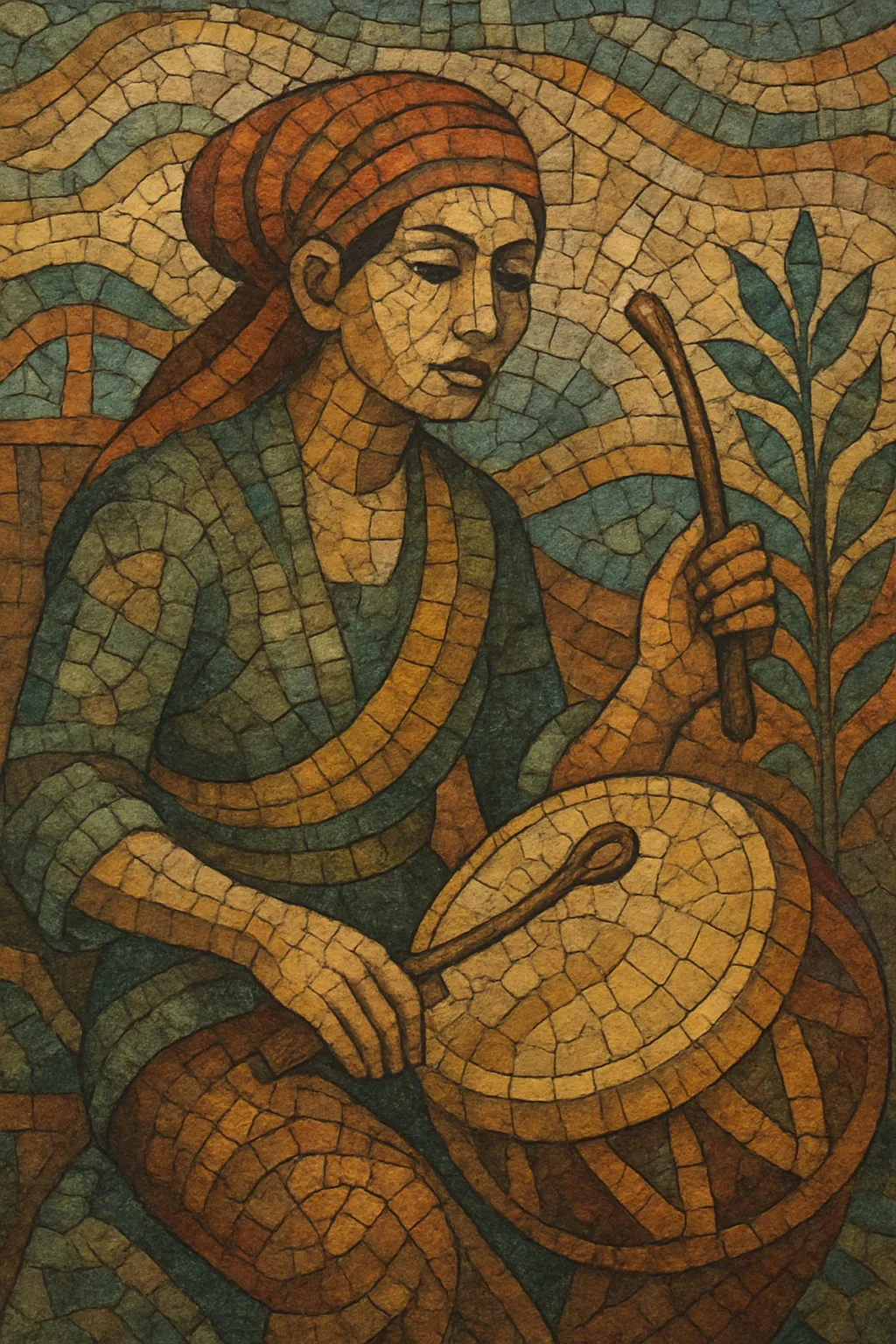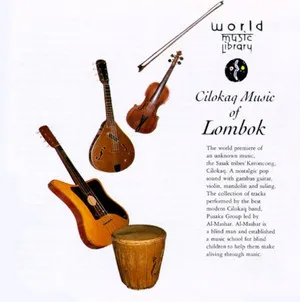Cilokaq is a regional popular music of the Sasak people on the island of Lombok, Indonesia. It grew out of community entertainment and wedding-procession music, combining local melodic sensibilities with the accessible groove of Indonesian mass-pop styles.
Typical cilokaq ensembles feature a small, portable mix of instruments: lead vocals (often a male–female pairing), violin (biola), bamboo flute (suling), plucked lute (often gambus or mandolin), frame/pair drums (gendang and ketipung), and small cymbals (rincik/kecrek). The rhythm usually sits in a swaying 4/4 with the familiar dangdut “dang–dut” drum cell, while melodies lean on pelog/slendro-inflected phrases delivered with ornamental, melismatic singing in the Sasak language.
Lyrically, songs range from flirtatious repartee and comic banter to romance and everyday life, reflecting the genre’s roots in social gatherings and processions (nyongkolan). The sound is simultaneously folk-local and modern-pop, a bridge between Lombok tradition and the cassette-era aesthetics that spread it across the island.
Cilokaq emerged among the Sasak people of Lombok as a lively, portable entertainment for village festivities and wedding processions (nyongkolan). Musicians adapted familiar local melodic modes (related to Lombok/Pelengkok gamelan practice) to small ensembles that could move through streets and play in intimate spaces. Early setups centered on voice, drums, flute, and plucked lutes, with the violin gradually becoming a key melodic lead.
With the proliferation of inexpensive cassettes and regional radio in the 1970s, cilokaq crystallized into a recognizable “regional pop” style. Musicians absorbed grooves and arranging touches from dangdut and keroncong, while retaining Sasak language and ornamentation. The result was a danceable, narrative-oriented repertoire recorded by local troupes for markets across Lombok, helping standardize instrumentation (biola, suling, gambus/mandolin, gendang–ketipung, rincik) and the medium-tempo 4/4 sway.
In the 2000s, younger players continued the tradition in community arts groups (sanggar) and event bands, sometimes blending cilokaq with modern keyboard timbres or more driving dangdut drum feels. Tourism and cultural programming in West Nusa Tenggara (NTB) kept public stages for the style, while weddings and neighborhood celebrations remain its core context. Today, cilokaq stands as Lombok’s emblematic street-pop/folk hybrid, balancing vernacular performance practice with the influence of Indonesian mass-pop idioms.



